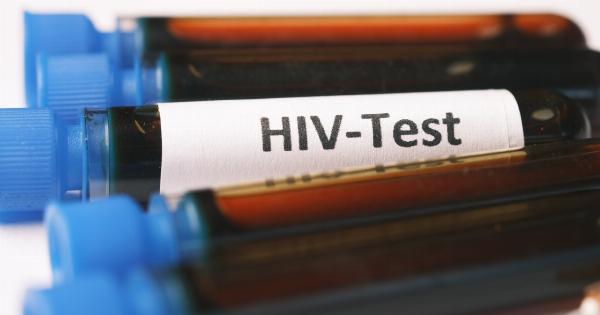HIV (Human Immunodeficiency Virus) infection is a global health concern that affects millions of people worldwide. This chronic viral infection weakens the immune system and can lead to acquired immunodeficiency syndrome (AIDS) if left untreated.
Understanding the symptoms and progression of HIV infection is crucial for early detection, effective treatment, and prevention of transmission.
What is HIV?
HIV is a retrovirus that attacks the immune system, specifically targeting CD4 cells (also known as T-helper cells) which play a crucial role in fighting infections.
The virus binds to the CD4 cells and enters them, replicating and gradually depleting their number. As the virus spreads, it weakens the immune system, making the body more susceptible to various infections and diseases.
Transmission of HIV
HIV can be transmitted through the exchange of certain body fluids, primarily blood, semen, vaginal fluids, and breast milk. Common modes of transmission include:.
- Unprotected sexual intercourse with an infected person
- Sharing contaminated needles or syringes
- Transfusions of infected blood or blood products (rare in countries with standardized blood screening)
- Transmission from an infected mother to her child during childbirth or breastfeeding
It is important to note that HIV cannot be transmitted through casual contact, such as hugging, shaking hands, or sharing utensils.
Early Symptoms of HIV Infection
Shortly after contracting HIV, some individuals may experience flu-like symptoms known as acute retroviral syndrome (ARS). These early symptoms, which typically occur within 2 to 4 weeks after infection, may include:.
- Fever
- Fatigue
- Sore throat
- Swollen lymph nodes
These symptoms may not always be recognized as signs of HIV infection, as they are similar to those of other viral illnesses. As a result, many people are unaware of their HIV-positive status during this stage.
Asymptomatic Stage
After the initial symptoms subside, HIV enters a phase called the asymptomatic stage. During this period, which can last for several years, the virus continues to replicate and destroy CD4 cells, albeit at a slower rate.
People in this stage may appear and feel healthy, but the virus is actively damaging their immune system. Regular HIV testing is crucial during this stage to detect the infection and proceed with appropriate treatment.
Advanced HIV Infection and AIDS
Without proper treatment, HIV eventually progresses to a more advanced stage, known as AIDS. At this point, the immune system is severely damaged, and the person becomes highly susceptible to opportunistic infections and certain types of cancer.
Advanced HIV infection may present with various symptoms, including:.
- Persistent fever
- Night sweats
- Unexplained weight loss
- Chronic diarrhea
- Difficulty swallowing
- Severe fatigue
- Recurrent respiratory infections
These symptoms are a result of the immune system’s inability to ward off infections and may vary from person to person. It is important to seek medical care if any of these symptoms persist or worsen.
Testing and Diagnosis
HIV infection can be diagnosed through various blood tests. The most common tests include:.
- Antibody test: This test detects the presence of HIV antibodies, which the body produces to fight the virus. It is the most common screening test for HIV.
- Antigen-antibody test: Also known as the fourth-generation test, this test detects both HIV antibodies and antigens, providing an earlier diagnosis compared to the antibody test.
- Viral load test: This test measures the amount of HIV genetic material (RNA) in the blood. It helps determine the level of viral replication and assess the effectiveness of antiretroviral therapy (ART).
Early testing and diagnosis are vital in preventing the progression of HIV infection and minimizing the risk of transmission to others.
Treatment and Management
HIV infection is managed through antiretroviral therapy (ART), a combination of medications that help reduce viral replication, preserve CD4 cell count, and restore immune function.
ART often involves a combination of different drugs, which should be taken consistently and as prescribed by healthcare professionals.
Alongside medication, maintaining a healthy lifestyle and adopting preventive measures are crucial for managing HIV infection.
This includes practicing safe sex, using barrier methods (e.g., condoms), refraining from sharing needles, and engaging in regular medical follow-ups.
Prevention and Education
Preventing new HIV infections relies on education and awareness. Promoting safe sexual practices, comprehensive sex education, and the importance of regular testing are essential components of HIV prevention strategies.
Access to clean needles, blood screenings, and proper sterilization techniques are also important in reducing the risk of transmission.
The development and dissemination of accurate information regarding HIV, its transmission, and available treatments play a significant role in combating the stigma and discrimination associated with the virus.
Conclusion
HIV infection is a complex viral condition that affects millions worldwide. Early detection, timely treatment, and adherence to antiretroviral therapy are crucial for managing the infection and preventing its progression to AIDS.
By promoting education, raising awareness, and creating supportive environments, we can reduce the transmission of HIV and ensure those affected receive the care they deserve.



























